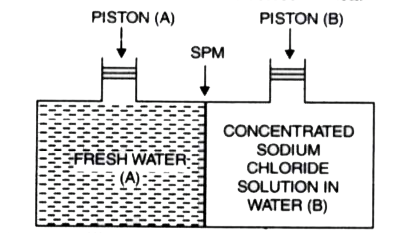A liquid is allowed to flow into a tube of truncated cone shape. Identify the correct statement from the following
The speed is high at the wider end and low at the narrow end
The speed is low at the wider end high at the narrow end
The speed is same at both ends in a streamline flow
The liquid flows with unifrom velocity in the tube
The correct Answer is:B
To solve the problem regarding the flow of liquid through a truncated cone-shaped tube, we can follow these steps:
Step 1: Understand the Geometry of the Tube
The tube has a truncated cone shape, which means it has two ends with different diameters. Let’s denote:
- A1 = Cross-sectional area at the narrow end
- A2 = Cross-sectional area at the wider end
Step 2: Apply the Continuity Equation
According to the principle of conservation of mass for incompressible fluids, the product of the cross-sectional area and the velocity of the fluid must remain constant along the tube. This is expressed mathematically as:
A1V1=A2V2
Where:
- V1 = Velocity of the liquid at the narrow end (A1)
- V2 = Velocity of the liquid at the wider end (A2)
Step 3: Rearrange the Continuity Equation
From the continuity equation, we can express the velocities in terms of the areas:
V1=A2A1V2
Step 4: Analyze the Areas
Since the area A2 (wider end) is greater than A1 (narrow end), we can conclude that:
A2>A1
Step 5: Determine the Relationship Between Velocities
From the rearranged equation, since A2 is greater than A1, it follows that:
V1>V2
This means that the velocity of the liquid is higher at the narrow end (A1) and lower at the wider end (A2).
Conclusion
Thus, the correct statement is that the speed of the liquid is higher at the narrow end and lower at the wider end.
The tube has a truncated cone shape, which means it has two ends with different diameters. Let’s denote:
- A1 = Cross-sectional area at the narrow end
- A2 = Cross-sectional area at the wider end
According to the principle of conservation of mass for incompressible fluids, the product of the cross-sectional area and the velocity of the fluid must remain constant along the tube. This is expressed mathematically as:
A1V1=A2V2
- V1 = Velocity of the liquid at the narrow end (A1)
- V2 = Velocity of the liquid at the wider end (A2)
From the continuity equation, we can express the velocities in terms of the areas:
V1=A2A1V2
Since the area A2 (wider end) is greater than A1 (narrow end), we can conclude that:
A2>A1
From the rearranged equation, since A2 is greater than A1, it follows that:
V1>V2
Thus, the correct statement is that the speed of the liquid is higher at the narrow end and lower at the wider end.
Topper's Solved these Questions
- SOLVD PAPERS 2017 NEET, AIIMS & JIPMERBOOK - DC PANDEY ENGLISHCHAPTER - SOLVD PAPERS 2017 NEET, AIIMS & JIPMEREXERCISE - Solved paper 2018(NEET)
22 Videos
- SOLVD PAPERS 2017 NEET, AIIMS & JIPMERBOOK - DC PANDEY ENGLISHCHAPTER - SOLVD PAPERS 2017 NEET, AIIMS & JIPMEREXERCISE - Solved paper 2018(AIIMS)
28 Videos
- SOLVD PAPERS 2017 NEET, AIIMS & JIPMERBOOK - DC PANDEY ENGLISHCHAPTER - SOLVD PAPERS 2017 NEET, AIIMS & JIPMEREXERCISE - Solved Papers 2017(AIIMS)
26 Videos
- SIMPLE HARMONIC MOTIONBOOK - DC PANDEY ENGLISHCHAPTER - SIMPLE HARMONIC MOTIONEXERCISE - Integer type questions
14 Videos
- SOUND WAVESBOOK - DC PANDEY ENGLISHCHAPTER - SOUND WAVESEXERCISE - Exercise 19.7
4 Videos
Similar Questions
Knowledge Check
Identify the incorrect statement from the following
AAM detection is carried out using a rectifier and an envelope detector.BPulse position denotes the time of rise or fall of the pulse amplitude.CModulation index μ is kept ≥ 1, to avoid distoriton.DFacsimile (FAX) scans the contents of the document to create electronic signals.Identify the incorrect statement from the following
APyramid of energy is mostly upright but sometimes it may be invertedBPyramids of number and biomass may be either upright or invertedCPyramid of biomass in sea is generally inverted as biomass of fish far exceeds that of phytoplankton.DFood chains are generally short with few trophic levels as only 10% of the energy is transferred to higher trophic level from lower one.

